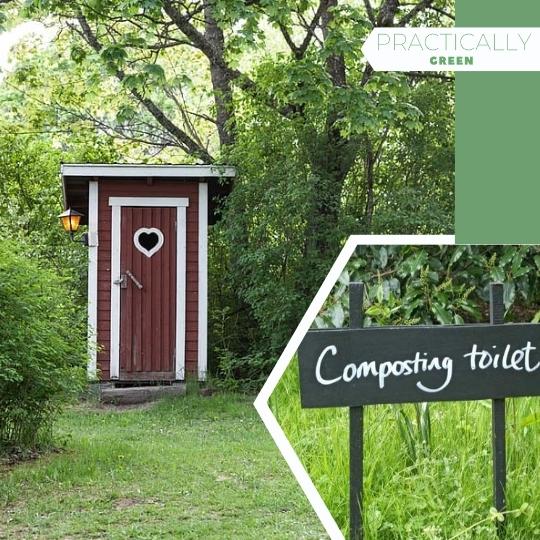
The composting toilet is a relatively new technology that has been gaining popularity in recent years.
One of the main reasons for this increase is because people are starting to realize how bad our current sewage system really is. The old-fashioned flush toilet has not changed much over the last 200 years, and it’s time we start exploring other options.
In this article, we will discuss all the different types of composting toilets and what living environment or type of person they’re best for.
What actually is a ‘composting toilet’?
A toilet that uses the composting system is a kind of dry toilet treating fecal matter through a biological process known as composting.
This process causes organic materials to decompose, which then transforms human waste into compost. Composting is performed under-regulated aerobic conditions by microorganisms (primarily bacteria and fungus).
Most composting toilets do not utilize water to clean or flush and are therefore referred to as “dry toilets” or “waterless toilets.”
A carbon addition like sawdust or peat moss is introduced after every use in various types of composting toilets to help compost the solid waste. This technique produces air spaces for an aerobic breakdown of human feces. This also increases the levels of carbon and nitrogen, decreasing potential odors.
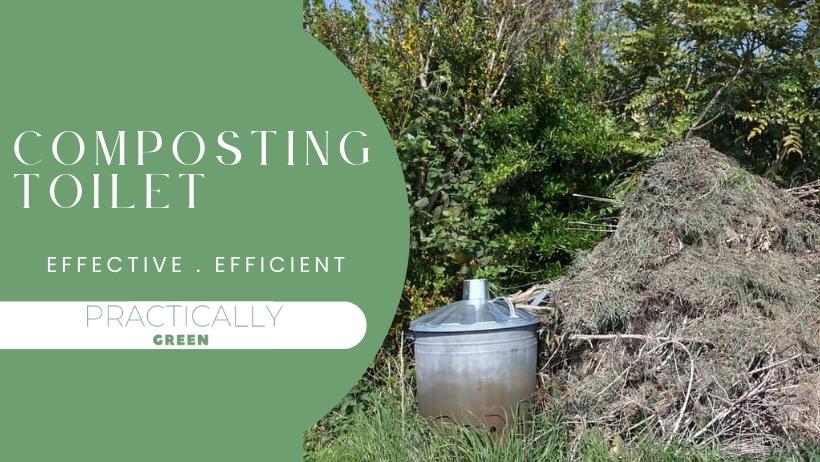
Why are more people opting for composting toilets?
When embarking on the journey of sustainable living in modern society, it is not an easy task to find effective and efficient solutions to everyday practices that harm our environment.
Several aspects of our everyday life are based on contemporary technology, and a great deal of this is so ordinary and basic that we scarcely believe its impact on the world.
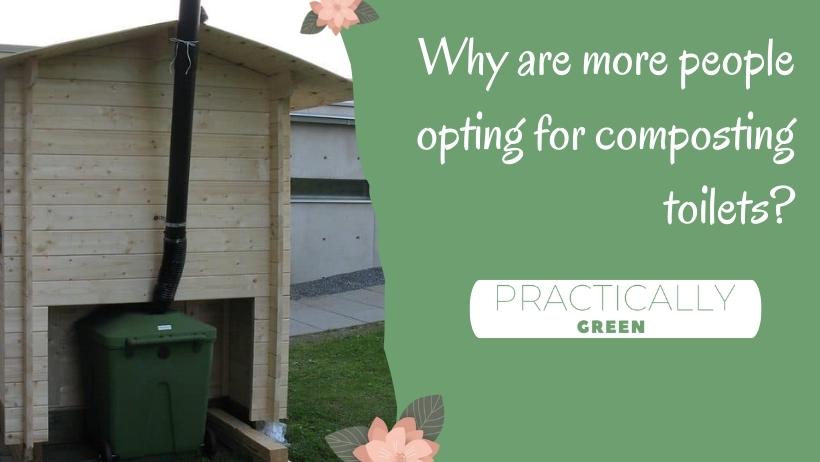
For example, think about the toilet in your house… To simply break it down:
Let’s say, hypothetically, the average person flushes their toilet 4 times a day, which totals to 1460 flushes a year. Now that’s PER PERSON, PER YEAR… so an average household of 5 people could be flushing 7,300 times a year.
Now to put it into perspective, each flush uses around 1.6 gallons of water, that’s a whopping 6 LITRES per flush! To make it worse, that’s roughly 11,680 gallons of water being used by a family of 5.
If you don’t already know about the environmental impacts caused by water wastage, please do look into it. Besides that, think of all the water bills you could save on by simply switching to composting toilets!
We’re aware of how intimidating it can be to switch from such a basic, traditional system to something new and possibly even unheard of. However, it can be the most simple process as long as you have all the information and research you need.
Things to consider:

Before we delve into all the types and models of composting toilets, it’s useful to keep a few questions and considerations in mind when reading through.
When selecting a compost toilet, some considerations are:
- What kind of facilities do I want?
- What kind of object will match my lifestyle best?
- Where is my home or property located and where would I put the toilet?
- Do I have an adequate area to install and maintain (i.e. turn) indoors or outdoors?
- What is the consumption of water/energy in each flushing cycle?
- How often am I prepared to change filters when having systems with a vent?
The following articles on our website will give you the knowledge you need on each type and help you make a well-informed decision.
What types of composting toilets are there?
There are many styles, types, and models of composting toilets you can choose for your place of residence, whether in your house, a cabin, or even a trailer van.
But first, be sure to read this article on composting toilet facts, to get the low down on the basic features and things you need to know about composting systems.
Electric composting toilets
Electric composting toilets are the next step toward a more sustainable lifestyle. They’re intended for single-person use and will swiftly break down waste with minimum odor—all while saving you a lot of time, money, water, and other resources!
This article looks at the advantages and disadvantages, as well as goes through the most popular model on the market today to help you decide which is best for you!
Non-electric composting toilets
Do you wish that there was an easier way to compost? One that doesn’t require electricity, or any other type of machinery? Well, your prayers have been answered.
Meet the non-electric composting toilet! These toilets are designed to allow for easy decomposition of waste without the need for any power whatsoever. They’re a great option if you want to reduce your carbon footprint and live in a greener home.
Non-electric composting toilets are a great way to save water, money, and time.
Waterless composting toilets
A waterless toilet sometimes referred to as a “dry sanitation” or “dry” system, is one that does not use water to treat or transport human waste. Toilets that do not flush have a far lower environmental impact than water-efficient toilets and wastewater disposal systems!
If you care about the environment, a waterless toilet can help you save a valuable resource in your home while also preserving the planet from further human-caused damage.
Aside from composting toilets as a whole, there are many brands that produce and manufacture some of the best composting toilets. Examples are Sun Mar, Nature’s head, Airhead, Separett, and many more.
Nature’s head is one of the most popular suppliers of composting toilets, however, you may find that some of the other brands are far more suited for your own needs.
This is one of the most common types of composting toilets but choosing the right model for you can be difficult, this article summarizes all the features and brands you can decide from.
Solar-powered composting toilets
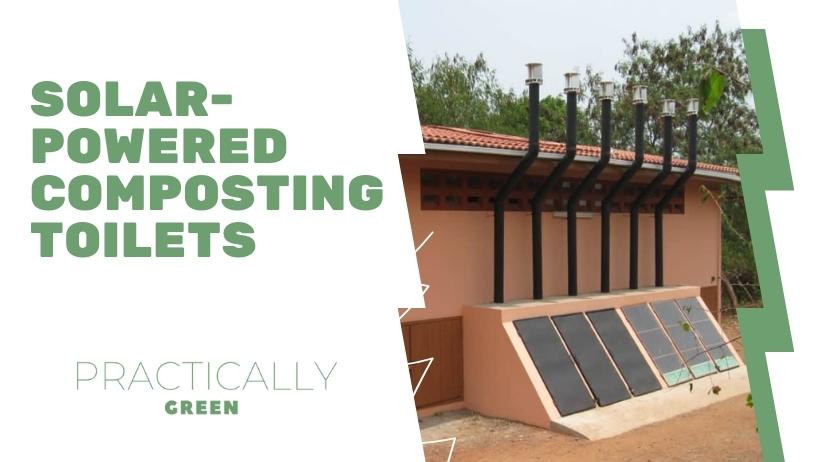
Solar energy is a clean and renewable resource that can be collected in the form of sunlight. It is energy from sunlight that can be converted into electricity or heat. Although it is quite a new idea and system, solar-powered composting toilets are eco-friendly because they use sunlight for energy instead of electricity or gas.
This makes it an excellent alternative source of power for those hoping to become more environmentally friendly.
This article teaches you how solar power can help boost your sustainability today!
Incinerating toilets
Composting toilets is a popular solution for more ecologically friendly toilet arrangements. These toilets allow households to break down their waste organically through decomposition. A composting toilet looks like any other traditional toilet, with the exception that it does not use water. A further popular alternative is an incinerating toilet, which actively eliminates your waste by incinerating it right after you use the facility. This toilet does not flush your waste; alternatively, it burns it.
Incinerating toilets are much more common in large buildings such as office spaces because they do away with most if not all of their sanitary issues by incineration.
In this article, composting toilets vs incinerating toilets are discussed, outlining the benefits and drawbacks of both incinerating and composting toilets, equipping you with all the information you need to make the best choice for your environment.
Off-grid composting toilet
An off-grid composting toilet is a self-contained, waterless, and odorless toilet system. It’s designed to be installed in areas where there is no access to running water or sewage systems, like when you live off-grid with limited freshwater supply or sanitation infrastructure.
It is an eco-friendly alternative to traditional toilets, and one of the best things about it is that there’s no need for electricity or water hookups.
The off-grid composting toilet is a relatively new invention that has been gaining popularity in recent years.
This blog post outlines the top 10 benefits of off-grid restrooms, installation, and even instructions on how to DIY your very own off-grid toilet.
Portable composting toilet
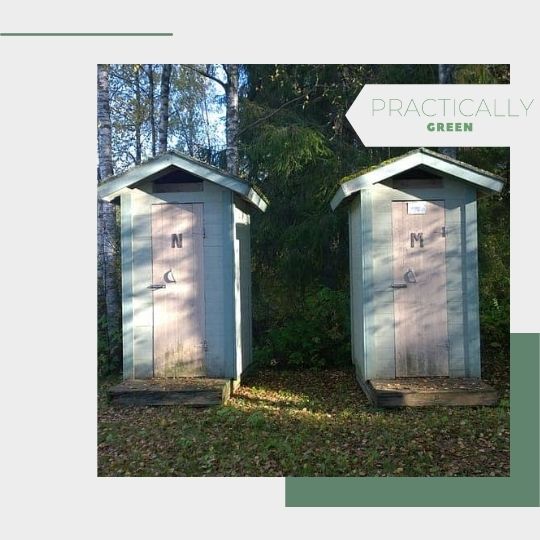
Portable composting toilets are compact and environmentally friendly, they don’t use much water and are easy to dump and clean. They usually require almost no installation, and if they do, they’re very easy to install. They take up little-to-no space due to the compact sizing.
They’re ideal for camping or for off-grid living spaces that require the toilet to be moved around regularly as a normal composting toilet typically can’t be moved so easily.
Although they need to be emptied regularly, it doesn’t require any plumbing and needs very little maintenance.
Self-contained composting toilet
Composting toilets are classified into two types: self-contained composting toilets and central.
They don’t appear to be all that different from your conventional toilet. A Composting toilet that is self-contained is typically seen in cottages or for summer residential use. If more than two individuals are utilizing the self-contained unit, it should not be operated all year.
As the name indicates, the toilet and composter are integrated into one unit, so composting occurs just beneath your toilet seat.
Both, however, have the same goal: to kill germs and recycle our urine and feces without requiring water. Instead of flushing, the waste is sent through a pipe to a composter, which is concealed from view by a trap door or screen.
However, how much water is saved? Are there any environmental expenses that go unnoticed? In this post, we’ll find out what all the fuss is about.
Urine diverting composting toilet
The use of the urine-diverting toilet is an environmentally-friendly alternative to traditional flushing toilets. The UDDT, as it’s called, has a design that separates liquid and solid waste from one another.
With today’s world becoming more environmentally conscious, the UDDT may be suited to people who want to reduce their water footprint.
Urine diversion toilets are becoming more and more popular in the United States, as people realize how much waste they can save by not using water. The urine-diverting toilet is a device that separates liquid from solid wastes to be used for composting.
The idea of this type of toilet is that it separates human urine from feces so that they can be dealt with separately, thus avoiding the most unpleasant smells.
Sawdust for composting toilet
As well to all the different models, basic types of composting toilet systems, and brands available, there are also materials that can be used to create a composting toilet, an example of this is sawdust.
Sawdust is a great way to get started on composting toilets. It’s something that you can make at home and it’s easy to find in nature.
Sawdust makes an excellent addition to the composting process because it helps cover up the odor and also gives off heat which speeds up the decomposition process.
It’s a great material to use for a composting toilet as it balances and helps keep moisture levels up for a healthier environment.
Composting toilet bags
Composting toilet bags are a biodegradable waste solution.
Compostable toilet bags are an easy and environmentally beneficial way to dispose of toxic waste. Instead of dumping your trash in landfills or, worse, our oceans, use biodegradable bags that will decompose throughout the composting process.
These bags degrade like other organic matter over time, reducing the quantity of methane gas produced by landfills.
DIY compost toilet

Many people become hesitant to leap into sustainable, green living due to the worries over costs and pricing of everyday changes.
Although a branded composting toilet from the likes of Nature’s head, Sun mar, and Airhead can be too expensive for some people, it is useful to note that these are also very easily DIY-able.
A composting toilet can be made with very few materials, such as a bucket with a large enough capacity, a chamber or bowl, a toilet seat, and potentially a fan to air out some odor. These materials are typically very cheap to obtain.
With DIY options consisting of as little as 3 materials, there is really no debating on how affordable this everyday change really can be!
Brands of composting toilets
With sustainable living becoming more and more popular, there are so many different brands to choose from for eco-friendly products and services.
Nature’s head, Sun mar, Airhead, and Separett are the ones we recommend.
| Image | Product | Our Score | Learn More |
|---|---|---|---|
Most Reliable  | Sun Mar GTG Portable Toilet Sun Mar has a patent for the most efficient composting method, all while having a long-standing history of creating and producing composting toilets. | 9.2 | Check Latest PriceRead Full Review |
Best Value  | Separett Villa 9215 AC/DC Separett has been developing waterless toilet solutions for over 40 years with the goal of improving quality of life and making everyday living easier and more pleasant for everyone. | 9.5 | Check Latest PriceRead Full Review |
Best Overall | Nature's Head Composting Toilet The Nature’s Head composting toilet is one of the most popular models out on the market right now. Tiny house owners absolutely love them, and for good reason too. | 9.1 | Check Latest PriceRead Full Review |
Best Value  | Air Head Composting Toilet A convenient installation for mobile lifestyles. It eliminates the need for water flushing, is easy to use, has a female-friendly design, and is water efficient, | 8.8 | Check Latest PriceRead Full Review |

